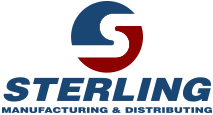Industrial foam packaging has revolutionized the way products are protected during transportation and storage.
This versatile material offers superior shock absorption, customizability, and cost-effectiveness, making it an essential component in various industries. From electronics to medical devices, furniture to automotive parts, industrial foam packaging ensures that products reach their destination safely and in pristine condition.
Let’s explore some frequently asked questions about industrial foam packaging to help you understand its importance and applications.
Q: What are the main types of industrial foam packaging?
A: There are two primary types of industrial foam packaging:
- Expanded Polystyrene (EPS) foam: A lightweight, rigid foam commonly used in protective packaging like foam blocks and inserts.
- Polyurethane (PU) foam: A flexible foam often used in cushioning applications such as foam cushions and pads.
Q: What are the Main Differences Between EPS and PU?
A: The main differences between expanded polystyrene (EPS) foam and polyurethane (PU) foam are:
- Structure: EPS foam is a closed-cell foam made from expanded polystyrene beads. PU foam can be either open-cell or closed-cell, created by reacting chemicals together.
- Density of weight: EPS foam is generally lighter and has a lower density. PU foam is denser and heavier, which can provide better cushioning in some applications.
- Insulation properties: PU foam has a higher R-value (insulation value) per inch compared to EPS foam, making it a more effective insulator.
- Compression resistance: PU foam typically has higher compression resistance and can withstand heavier loads compared to EPS foam.
- Durability: PU foam is generally more durable and resistant to wear and tear, moisture, chemicals, and UV radiation compared to EPS foam.
- Flexibility: PU foam can be either rigid or flexible, depending on its formulation. EPS foam is typically rigid and less flexible.
- Water resistance: PU foam has better water resistance properties compared to EPS foam.
- Applications: EPS foam is commonly used in packaging, insulation, and as structural components in construction. PU foam is often used in furniture, automotive applications, and high-performance insulation.
- Cost: PU foam is generally more expensive than EPS foam.
Q: What are the benefits of using industrial foam packaging?
A: Industrial foam packaging offers several advantages:
- Superior protection against shock and vibration
- Customizability to fit specific product shapes and sizes
- Lightweight nature, reducing shipping costs and carbon emissions
- Versatility in application across various industries
Q: How Does Foam Packaging Reduce Shipping Costs?
A: Foam packaging can help reduce shipping costs in several ways:
- Lightweight nature: Foam is an extremely lightweight material, which directly reduces the overall weight of packages. Since shipping costs are often based on weight, using foam instead of heavier packaging materials can significantly lower shipping expenses.
- Dimensional weight optimization: Foam packaging can be customized to fit products snugly, minimizing void space. This reduces the package’s overall dimensions, which is crucial for lowering costs associated with dimensional weight pricing used by many carriers.
- Versatile design: Foam can be molded or cut to precise shapes, allowing for optimized packaging designs that reduce overall package size while still providing adequate protection.
- Reduced need for additional protective materials: The cushioning properties of foam often eliminate the need for extra protective materials, further reducing package weight and size.
- Damage prevention: By effectively protecting products during transit, foam packaging reduces the likelihood of returns or replacements due to shipping damage, saving on additional shipping and replacement costs.
- Efficiency in packaging: Foam packaging can be quickly and efficiently integrated into packing routines, saving time and enhancing overall productivity in shipping operations.
- Reusability: Some foam packaging materials can be reused multiple times, providing long-term cost savings for businesses that handle return shipments or internal transfers.
Q: Which industries commonly use industrial foam packaging?
A: Industrial foam packaging is utilized in numerous sectors, including:
- Electronics
- Medical and pharmaceutical
- Furniture and bedding
- Automotive
- Military and defense
- Oil and gas
- Engineering and construction
Q: How does foam packaging protect electronic components?
A: Foam packaging protects electronic components by:
- Absorbing shock and vibration during transit
- Providing anti-static properties to prevent damage from electrostatic discharge
- Offering custom-molded inserts for precise fit and protection
Q: Can industrial foam packaging be customized?
A: Yes, industrial foam packaging can be customized to fit specific product dimensions and requirements. Custom foam fabrication allows for the creation of precise shapes and sizes to ensure optimal protection for your products.
Q: Is industrial foam packaging environmentally friendly?
A: Many foam materials used in industrial packaging are now eco-friendly, recyclable, and reusable, making them an environmentally responsible choice.
Q: How does foam packaging benefit the medical industry?
A: In the medical industry, foam packaging is crucial for:
- Protecting delicate medical equipment and surgical instruments
- Ensuring sterility of medical devices during transportation
- Providing cushioning for sensitive diagnostic tools
Q: What makes industrial foam packaging cost-effective?
Industrial foam packaging is cost-effective due to its:
- Lightweight nature, reducing shipping costs
- Ability to prevent product damage, minimizing replacement and return expenses
- Versatility, allowing for reuse in many applications
Q: How does Sterling Manufacturing contribute to the industrial foam packaging industry?
A: Since 1968, Sterling Manufacturing has been a leading supplier of Polyurethane, Polyethylene, and Polyurethane foam products. Located in Houston, Texas, we provide both bulk raw materials and finished products for various industries, including furniture and bedding, military, oil and gas, engineering and construction, electronics, medical and pharmaceutical, and automotive sectors.
Our expertise in custom foam fabrication ensures that each packaging solution is optimized for its intended use, meeting our customers’ demands for quality, price, and service.
If you’re looking for high-quality industrial foam packaging solutions tailored to your specific requirements, contact Sterling Manufacturing today. Let us help you protect your products with our innovative and reliable foam packaging solutions.


